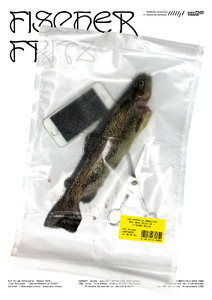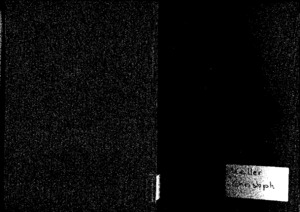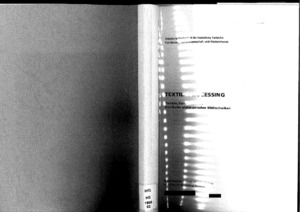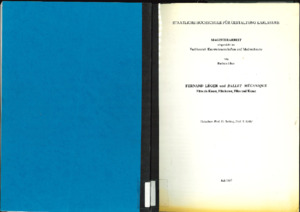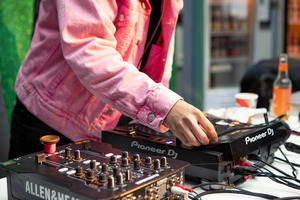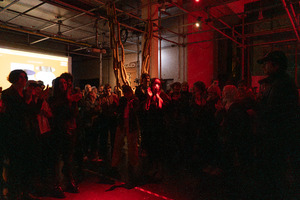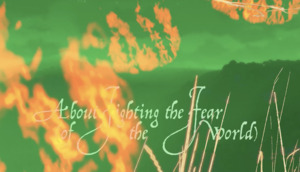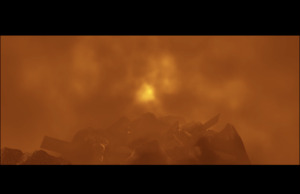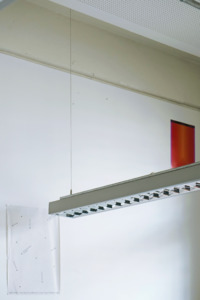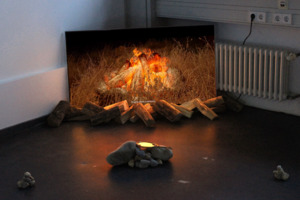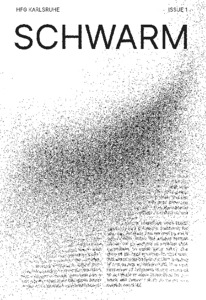"Staatliche Hochschule für Gestaltung (HfG) Karlsruhe"
| Begriff | Staatliche Hochschule für Gestaltung (HfG) Karlsruhe |
| Metakey | Ort: Institution (creative_work:location_institution) |
| Typ | Keyword |
| Vokabular | Werk |
92 Inhalte
Filter werden geladen
- Seite 1 von 8
DNS #69
- Titel
- DNS #69
- Untertitel
- Fischer Fritz
- Autor/in
- Beschreibung (de)
- Frische Fische kann Fischer Fritz nicht mehr fischen. Nicht erst seit seinem Schlaganfall. Sein Sohn Franz ist kein Fischer geworden, sondern Frisör in der Großstadt. Um den Vater zu versorgen hat er eine ausländische Pflegekraft engagiert. Ein Sprechtheater nennt die Autorin Raphaela Bardutzky ihr Stück, das bei den Autor*innentheatertage 2022 am Deutschen Theater in Berlin ausgezeichnet wurde. Sprachlich virtuos, tragisch-komisch und spielerisch leicht erzählt sie von Heimat und Fremde, Sehnsucht und Einsamkeit, Stadt und Land, Alter und Jugend. Im Anschluss findet ein Gespräch mit der Autorin Raphaela Bardutzky statt.
- Beschreibung (en)
- Fisherman Fritz can no longer catch fresh fish. Not just since his stroke. His son Franz has not become a fisherman, but a hairdresser in the big city. He has hired a foreign carer to look after his father. Author Raphaela Bardutzky calls her play, which won an award at the Autor*innentheatertage 2022 at the Deutsches Theater in Berlin, spoken theater. With virtuoso language, tragic-comic and playful lightness, it tells of home and foreignness, longing and loneliness, city and country, age and youth. This will be followed by a discussion with the author Raphaela Bardutzky.
- Typ des Projekts/Werks
- Schlagworte
- Datierung
- 04.02.2023
- Mitwirkende
- Sprache
- Ort: Institution
- Ort
- Großes Studio
- Stadt
- Land
- Beteiligte Institution(en)
- Titel
- DNS #69
- Projektleiter/in
- Semester
- Studiengang
- Lehrveranstaltung
- Importiert am
- 20.12.2023
- Übergeordnete Sets
- 1
- Set enthält
- 0 10
Excreta Fluxorum - Theatrum Instrumentorum
- Titel
- Excreta Fluxorum - Theatrum Instrumentorum
- Untertitel
- George Maciunas und die Kultur der „curiositas”
- Autor/in
- Beschreibung (de)
- „Möglicherweise erscheinen die intermediären Kunstformen der 60er-jahre als zu komplex, ihre Manifestationen zu sehr als Teil einer noch lebenden Kunstgeschichte, vielleicht hindert auch die noch nicht abgeschlossene Bewältigung der postmodernen Wende in Philosophie, Kunst und Literatur an einer generalüberholten wissenschaftlichen Annäherung an diesen Themenbereich, der sich von der fließenden, aus Künstlerkommentaren über Kritiken in methodischen Darstellungen hervorgegangenen bisherigen Versuchen einer vorläufigen Einordnung des Phänomens Fluxus abzugrenzen hätte."
- Beschreibung (en)
- “It is possible that the intermediary art forms of the 1960s appear too complex, their manifestations too much a part of a still living art history; perhaps the fact that the postmodern turn in philosophy, art and literature has not yet been completed also prevents a generally overhauled academic approach to this subject area, which would have to distinguish itself from the fluid attempts at a provisional classification of the phenomenon of Fluxus that have emerged from artists' commentaries on critiques in methodical presentations.”
- Kategorie
- Typ des Projekts/Werks
- Schlagworte
- Datierung
- 04.03.1999
- Sprache
- Ort: Institution
- Stadt
- Land
- Titel
- Excreta Fluxorum - Theatrum Instrumentorum
- Projektleiter/in
- Semester
- Studiengang
- Typ der Abschlussarbeit
- Archiv-Signatur
- HfG HS 1999 01
- Externes Archiv
- Importiert am
- 11.01.2024
- Übergeordnete Sets
- 1
- Set enthält
- 0 3
Textile Processing
- Titel
- Textile Processing
- Untertitel
- Punkte, Zeilen, Spalten; Vorläufer elektronischer Bildtechniken
- Autor/in
- Beschreibung (de)
- “Die Ähnlichkeiten von Geweben, Mustervorlagen und heutigen Rasterbildern sind eklatant. In einer Genese der technischen Bilder kann das Gewebe als Exemplarfall und Vorreiter aller technisch-elektronischer Bilder gelten.”
“Die ersten Bilder, die von ihrem Bildkörper abgelöst wurden, bestanden aus einem Stapel gelochter Karten für die Verwendung im Jacquardwebstuhl. Der Bildcode ist hier noch begreifbar, das Bild, wenn es aus dem Stapel dieser Karten gewoben wird, ein textil-taktiles Produkt. Patricia Wallers Needle-Works zeigen die Leerstelle heutiger Bildmaschinen auf, wo Bilder auf Monitoren erscheinen, um im nächsten Moment schon wieder durch den nächsten (Netzhaut-) Eindruck ausgetauscht zu werden.”
- “Die Ähnlichkeiten von Geweben, Mustervorlagen und heutigen Rasterbildern sind eklatant. In einer Genese der technischen Bilder kann das Gewebe als Exemplarfall und Vorreiter aller technisch-elektronischer Bilder gelten.”
- Beschreibung (en)
- “The similarities between fabrics, patterns and today's raster images are striking. In the genesis of technical images, the fabric can be regarded as an exemplary case and forerunner of all technical-electronic images.”
“The first images that were detached from their image body consisted of a stack of perforated cards for use in the Jacquard loom. The image code is still comprehensible here, the image, when woven from the pile of these cards, is a textile-tactile product. Patricia Waller's needle works show the blank space of today's image machines, where images appear on monitors only to be replaced by the next (retinal) impression in the very next moment.”
- “The similarities between fabrics, patterns and today's raster images are striking. In the genesis of technical images, the fabric can be regarded as an exemplary case and forerunner of all technical-electronic images.”
- Kategorie
- Typ des Projekts/Werks
- Schlagworte
- Datierung
- 02.11.1998
- Sprache
- Ort: Institution
- Stadt
- Titel
- Textile Processing
- Projektleiter/in
- Semester
- Studiengang
- Typ der Abschlussarbeit
- Archiv-Signatur
- HfG HS 1998 02
- Externes Archiv
- Importiert am
- 11.01.2024
- Übergeordnete Sets
- 0
- Set enthält
- 0 2
Fernand Léger und Ballet Mécanique
- Titel
- Fernand Léger und Ballet Mécanique
- Untertitel
- Film als Kunst, Filmkunst, Film und Kunst
- Autor/in
- Beschreibung (de)
- „‚Ballet Mécanique‘ ist zu einer Zeit entstanden, die als Höhepunkt, und immer wieder auch als Wendepunkt in Légers Malerei verstanden wird. Der Film fügt sich nicht nur in seine künstlerische Konzeption ein, sondern hat diese auch zum Thema. ‚Ballet Mécanique‘ ist ein Manifest, nicht nur für seine Kunst, sondern auch für das Kino. Wie bei seinen Literatenfreunden ist Légers intensive Auseinandersetzung mit dem Kino von einer doppelten Intention geprägt, von deren Hinwendung zu dem jungen Medium als potentiellen Mittel, die eigene Kunst zu reformieren, und vom Entwurf eines neuen Konzepts von Film, der seinerseits durch die gestalterische Intervention von Dichtern und Malern zu seinen eigenen Ausdrucksmitteln findet."
- Beschreibung (en)
- “'Ballet Mécanique' was created at a time that is seen as a high point, and also repeatedly as a turning point, in Léger's painting. The film not only fits into his artistic conception, but also has it as its theme. 'Ballet Mécanique' is a manifesto, not only for his art, but also for cinema. As with his literary friends, Léger's intensive engagement with cinema is characterized by a double intention, by their turn to the young medium as a potential means of reforming their own art, and by the design of a new concept of film, which in turn finds its own means of expression through the creative intervention of poets and painters.”
- Kategorie
- Schlagworte
- Datierung
- Juli 1997
- Sprache
- Ort: Institution
- Stadt
- Land
- Titel
- Fernand Léger und Ballet Mécanique
- Projektleiter/in
- Semester
- Studiengang
- Typ der Abschlussarbeit
- Archiv-Signatur
- HfG HS 1997 02
- Externes Archiv
- Importiert am
- 11.01.2024
- Übergeordnete Sets
- 1
- Set enthält
- 0 2
Tag der offenen Tür im Hallenbau 2024
- Titel
- Tag der offenen Tür im Hallenbau 2024
- Titel (en)
- Tag der offenen Tür im Hallenbau 2024
- Beschreibung (de)
- Gemeinsam mit unseren Hallenbau-Partnern öffnen wir unsere Pforten am 04. Februar 2024.
Besuchen Sie uns uns am neuen »Tag der offenen Tür« im Hallenbau und schauen Sie hinter die Kulissen von allen vier Institutionen. Das ZKM | Karlsruhe, die Staatliche Kunsthalle Karlsruhe, die Hochschule für Gestaltung Karlsruhe und die Städtische Galerie Karlsruhe freuen sich auf Sie.
Der neue »Tag der offenen Tür im Hallenbau« wird jedes Jahr am ersten Sonntag im Februar stattfinden. Er ersetzt den traditionellen Termin am 6. Januar.
Zum Tag der offenen Tür im Hallenbau präsentiert die HfG speziell das Thema Druck und Publikation, und zwar in kleinen Auflagen, vielfältig und zum Mitmachen. Sie lädt dazu ein, Publishing Groups und andere Studierenden-Initiativen kennenzulernen. Zudem wird es eine kleine Ausstellung und Führungen durch die Hochschule für Studieninteressierte geben.
Unser Programm ab 11 Uhr:
11:30-12 Uhr Lesung KLAK Lesebühne
12-14 Uhr Sozial & Durstig Pop Up Bar mit DJ Dakang
14 Uhr 1. Führung zum Pavillon Sonic Spatiology Vol. 2
15 Uhr Vortrag Paolo Caffoni Lesebühne
16 Uhr 2. Führung zum Pavillon Sonic Spatiology Vol. 2
Parallel Kino im Blauen Salon
11:00 Uhr bis 13:30 Uhr - Sparte I
13.30 Uhr bis 14:00 Uhr - Mittagspause
14:00 Uhr bis 16:30 Uhr - Sparte II
17:00 Uhr bis 19:00 Uhr - Abschluss - ROGER & ME (1989)
Das Kultivierte Jahrmarktkino - Kurzfilme aus 31 1/2 Jahren HfG-Geschichte
Von 11 bis 17 Uhr lassen wir im Kino im Blauen Salon die Pforten kontinuierlich geöffnet und projizieren ein großes Querbeet-Programm an hauseigenen Kurzfilmen. Dabei mischen wir Arbeiten von aktuell noch eingeschriebenen Regisseur*innen mit den Werken sagenumwobener ehemaliger Studierender. Alles ist dabei: Von der symbolischen HfG-Grundsteinlegung über 90er-Jahre Trash-Ästhetik, Essay- und Animationsfilmen bis hin zu dramatischen Miniaturen. Nehmen Sie ihre imaginäre Zuckerwatte mit in unser Jahrmarktkino und lassen Sie sich berauschen von der Vielfalt einer dreidekadigen Schaffensperiode.
Zum Tagesabschluss möchte sich das Kino im Blauen Salon mit einer Zusatz-Attraktion als reguläre Spielstätte vorstellen : Michael Moore's Frühwerk "Roger & Me" von 1989. Moore öffnet im weitesten Sinne auch hier die Türen (so viel zu Legitimierung!) in seinem Heimatort Flint, Michigan, um die verantwortlichen Chefs und Vorgesetzten zu befragen, wie es zu der Massentlassung von 35.000 Personen in der lokalen General-Motors Fabrik kommen konnte. Eine unterhaltsame Mischung aus Galgenhumor und David vs. Goliath-Kämpfen. Wir projizieren den Film als 35mm Kopie im englischen Original.
- Gemeinsam mit unseren Hallenbau-Partnern öffnen wir unsere Pforten am 04. Februar 2024.
- Typ des Projekts/Werks
- Schlagworte
- Datierung
- 04.02.2024
- Ort: Institution
- Ort
- Lichthof
- Stadt
- Land
- Beteiligte Institution(en)
- Internetlinks
- Titel
- Tag der offenen Tür im Hallenbau 2024
- Urheberrechtshinweis
- © Staatliche Hochschule für Gestaltung Karlsruhe
- Importiert am
- 20.02.2024
- Übergeordnete Sets
- 1
- Set enthält
- 0 13
UMBAU Issue 3 Celebration
- Titel
- UMBAU Issue 3 Celebration
- Autor/in
- Beschreibung (de)
- Thursday our HfG online Journal UMBAU will celebrate it's 3rd Issue called CHAINING.
8pm / 18.01.24 / at HfG Forum
There will be a performance by the artist Elle Fierce at 20:30 They are a Trans Non-Binary, British born Jamaican-Irish artist and activist, classically trained in ballet and modern dance, and have performed on stages around the world, particularly in the UK and most recently as a Soloist at Oper Leipzig. Now a freelance artist, with a multi disciplinary approach to performance, combining their activism and life experience as a black trans body to create provocative works.
The event shows artworks by Lucia Mattes and Lars Pinkwart and hosts afterwards DJ sets by aswesome LaLa Tina and our very best Frankie Spiderweb.
Our first contributions feature Mascha Dilger, Matteo Pasquinelli and Ülkü Süngün.
With unchained hearts, your UMBAU Team // Paolo Caffoni, Charlotte Eifler, Yannick Fritz, Jule Köpke & Livia Lazzarini
- Thursday our HfG online Journal UMBAU will celebrate it's 3rd Issue called CHAINING.
- Beschreibung (en)
- Thursday our HfG online Journal UMBAU will celebrate it's 3rd Issue called CHAINING.
8pm / 18.01.24 / at HfG Forum
There will be a performance by the artist Elle Fierce at 20:30 They are a Trans Non-Binary, British born Jamaican-Irish artist and activist, classically trained in ballet and modern dance, and have performed on stages around the world, particularly in the UK and most recently as a Soloist at Oper Leipzig. Now a freelance artist, with a multi disciplinary approach to performance, combining their activism and life experience as a black trans body to create provocative works.
The event shows artworks by Lucia Mattes and Lars Pinkwart and hosts afterwards DJ sets by aswesome LaLa Tina and our very best Frankie Spiderweb.
Our first contributions feature Mascha Dilger, Matteo Pasquinelli and Ülkü Süngün.
With unchained hearts, your UMBAU Team // Paolo Caffoni, Charlotte Eifler, Yannick Fritz, Jule Köpke & Livia Lazzarini
- Thursday our HfG online Journal UMBAU will celebrate it's 3rd Issue called CHAINING.
- Schlagworte
- Datierung
- 18.01.2024
- Mitwirkende
- Ort: Institution
- Ort
- HfG Forum
- Stadt
- Land
- Internetlinks
- Titel
- UMBAU Issue 3 Celebration
- Importiert am
- 20.02.2024
- Übergeordnete Sets
- 0
- Set enthält
- 0 25
An atmosphere of usership
- Titel
- An atmosphere of usership
- Untertitel des Projekts/Werks (en)
- Vom Nutzen der Kunst
- Autor/in
- Beschreibung (de)
- Experts loathe them, spectators oppose them, owners belittle them, yet users abide… though not by the rules. Users and the use that they make — which together we refer to as usership — form a kind of atmosphere, in both the most literal and most figurative sense. Unlike ownership, usership is not a fiction bolstered and legitimated by institutions, but a collective subjectivity comprised of all the agents — human and other-than-human — who make use of a given territory or environment, ensuring the oxygen exchange of the atmosphere. Indeed, as users they are the artisans of that environment, the landscapers and artists of the atmosphere that sustains it. What would it mean, though, for public institutions to foster an atmosphere of usership?
- Beschreibung (en)
- Experts loathe them, spectators oppose them, owners belittle them, yet users abide… though not by the rules. Users and the use that they make — which together we refer to as usership — form a kind of atmosphere, in both the most literal and most figurative sense. Unlike ownership, usership is not a fiction bolstered and legitimated by institutions, but a collective subjectivity comprised of all the agents — human and other-than-human — who make use of a given territory or environment, ensuring the oxygen exchange of the atmosphere. Indeed, as users they are the artisans of that environment, the landscapers and artists of the atmosphere that sustains it. What would it mean, though, for public institutions to foster an atmosphere of usership?
- Typ des Projekts/Werks
- Schlagworte
- Datierung
- 08.02.2024
- Ort: Institution
- Ort
- Medialonge
- Stadt
- Land
- Internetlinks
- Titel
- An atmosphere of usership
- Importiert am
- 20.02.2024
- Übergeordnete Sets
- 1
- Set enthält
- 0 0
About Fighting the Fear (of the World)
- Titel
- About Fighting the Fear (of the World)
- Titel (en)
- About Fighting the Fear (of the World)
- Autor/in
- Beschreibung (de)
- "Über das Bekämpfen der Angst (vor der Welt)" ist eine spekulative Videoarbeit, die ein Spektrum von Phänomenen rund um Karten, Angst, Krieg, Reisen und den Körper abdeckt, wobei der Schwerpunkt auf der Praxis der Kartierung als Instrument zur Unterdrückung und Kontrolle von Land und Menschen liegt. Das Video versucht, einen Rahmen für das Thema zu schaffen, indem es viele verschiedene Geschichten zu einem Cluster zusammenführt, der vielleicht nicht repräsentativ ist, aber einige Teile des Themas beleuchtet. Ästhetisch und strukturell ist das Video von Rollenspielen, der Pre-Vis-Technik (die in Filmproduktionen verwendet wird) und Found Footage inspiriert. Das Szenario ist in einer fernen Zukunft angesiedelt, in der Klimawandel und Massenaussterben längst ihre Auswirkungen gezeigt haben und die Bestien, die vor der großen Kolonisierung über das Unbekannte wachten, zurückgekehrt sind. In der Rolle der Hauptfigur sucht der Zuschauer, angeleitet von einem Erzähler, nach Überresten der alten Welt, um zu verstehen, warum alles kartiert werden musste.
- Beschreibung (en)
- "About Fighting the Fear (of the World)" is a speculative video work that covers a spectrum of phenomena around maps, fear, war, traveling, and the body, with a focus on the practice of mapping as a tool to oppress and control land and people. The video attempts to frame the issue by bringing together many different stories to create a cluster that may not be representative but illuminates some parts of the issue. Aesthetically and structurally, the video is inspired by role-playing games, pre-vis technique (used in film productions), and found footage. The scenario is set in a distant future in which climate change and mass extinction have long since had an impact and beasts that used to watch over the unknown before the big colonization have returned. As the main character, the viewer searches for remnants of the old world, guided by a narrator, in order to understand why everything had to be mapped.
- Typ des Projekts/Werks
- Schlagworte
- Datierung
- 22.02.2024
- Mitwirkende
- Dank an
- Sprache
- Untertitel (Film)
- Material
- Technik/Verfahren/Formate
- MP4
- Abmessungen
- 2500 x 1080 px
- Dauer
- 26 min
- Ort: Institution
- Ort
- Werkschau und Diplominstallation in Raum 222, Video-Screening im Kino im Blauen Salon
- Stadt
- Land
- Titel
- About Fighting the Fear (of the World)
- Projektleiter/in
- Semester
- Studiengang
- Typ der Abschlussarbeit
- Importiert am
- 28.02.2024
- Übergeordnete Sets
- 1
- Set enthält
- 3 3
Filmstills
- Titel
- Filmstills
- Titel (en)
- About Fighting the Fear (of the World)
- Autor/in
- Beschreibung (de)
- "Über das Bekämpfen der Angst (vor der Welt)" ist eine spekulative Videoarbeit, die ein Spektrum von Phänomenen rund um Karten, Angst, Krieg, Reisen und den Körper abdeckt, wobei der Schwerpunkt auf der Praxis der Kartierung als Instrument zur Unterdrückung und Kontrolle von Land und Menschen liegt. Das Video versucht, einen Rahmen für das Thema zu schaffen, indem es viele verschiedene Geschichten zu einem Cluster zusammenführt, der vielleicht nicht repräsentativ ist, aber einige Teile des Themas beleuchtet. Ästhetisch und strukturell ist das Video von Rollenspielen, der Pre-Vis-Technik (die in Filmproduktionen verwendet wird) und Found Footage inspiriert. Das Szenario ist in einer fernen Zukunft angesiedelt, in der Klimawandel und Massenaussterben längst ihre Auswirkungen gezeigt haben und die Bestien, die vor der großen Kolonisierung über das Unbekannte wachten, zurückgekehrt sind. In der Rolle der Hauptfigur sucht der Zuschauer, angeleitet von einem Erzähler, nach Überresten der alten Welt, um zu verstehen, warum alles kartiert werden musste.
- Beschreibung (en)
- "About Fighting the Fear (of the World)" is a speculative video work that covers a spectrum of phenomena around maps, fear, war, traveling, and the body, with a focus on the practice of mapping as a tool to oppress and control land and people. The video attempts to frame the issue by bringing together many different stories to create a cluster that may not be representative but illuminates some parts of the issue. Aesthetically and structurally, the video is inspired by role-playing games, pre-vis technique (used in film productions), and found footage. The scenario is set in a distant future in which climate change and mass extinction have long since had an impact and beasts that used to watch over the unknown before the big colonization have returned. As the main character, the viewer searches for remnants of the old world, guided by a narrator, in order to understand why everything had to be mapped.
- Typ des Projekts/Werks
- Schlagworte
- Datierung
- 22.02.2024
- Mitwirkende
- Dank an
- Sprache
- Untertitel (Film)
- Material
- Technik/Verfahren/Formate
- MP4
- Abmessungen
- 2500 x 1080 px
- Dauer
- 26 min
- Ort: Institution
- Ort
- Werkschau und Diplominstallation in Raum 222, Video-Screening im Kino im Blauen Salon
- Stadt
- Land
- Titel
- Filmstills
- Projektleiter/in
- Semester
- Studiengang
- Typ der Abschlussarbeit
- Importiert am
- 28.02.2024
- Übergeordnete Sets
- 1
- Set enthält
- 0 16
Ausstellung / Exhibition
- Titel
- Ausstellung / Exhibition
- Titel (en)
- About Fighting the Fear (of the World)
- Autor/in
- Beschreibung (de)
- "Über das Bekämpfen der Angst (vor der Welt)" ist eine spekulative Videoarbeit, die ein Spektrum von Phänomenen rund um Karten, Angst, Krieg, Reisen und den Körper abdeckt, wobei der Schwerpunkt auf der Praxis der Kartierung als Instrument zur Unterdrückung und Kontrolle von Land und Menschen liegt. Das Video versucht, einen Rahmen für das Thema zu schaffen, indem es viele verschiedene Geschichten zu einem Cluster zusammenführt, der vielleicht nicht repräsentativ ist, aber einige Teile des Themas beleuchtet. Ästhetisch und strukturell ist das Video von Rollenspielen, der Pre-Vis-Technik (die in Filmproduktionen verwendet wird) und Found Footage inspiriert. Das Szenario ist in einer fernen Zukunft angesiedelt, in der Klimawandel und Massenaussterben längst ihre Auswirkungen gezeigt haben und die Bestien, die vor der großen Kolonisierung über das Unbekannte wachten, zurückgekehrt sind. In der Rolle der Hauptfigur sucht der Zuschauer, angeleitet von einem Erzähler, nach Überresten der alten Welt, um zu verstehen, warum alles kartiert werden musste.
- Beschreibung (en)
- "About Fighting the Fear (of the World)" is a speculative video work that covers a spectrum of phenomena around maps, fear, war, traveling, and the body, with a focus on the practice of mapping as a tool to oppress and control land and people. The video attempts to frame the issue by bringing together many different stories to create a cluster that may not be representative but illuminates some parts of the issue. Aesthetically and structurally, the video is inspired by role-playing games, pre-vis technique (used in film productions), and found footage. The scenario is set in a distant future in which climate change and mass extinction have long since had an impact and beasts that used to watch over the unknown before the big colonization have returned. As the main character, the viewer searches for remnants of the old world, guided by a narrator, in order to understand why everything had to be mapped.
- Typ des Projekts/Werks
- Schlagworte
- Datierung
- 22.02.2024
- Mitwirkende
- Dank an
- Sprache
- Untertitel (Film)
- Material
- Technik/Verfahren/Formate
- MP4
- Abmessungen
- 2500 x 1080 px
- Dauer
- 26 min
- Ort: Institution
- Ort
- Werkschau und Diplominstallation in Raum 222, Video-Screening im Kino im Blauen Salon
- Stadt
- Land
- Titel
- Ausstellung / Exhibition
- Projektleiter/in
- Semester
- Studiengang
- Typ der Abschlussarbeit
- Importiert am
- 28.02.2024
- Übergeordnete Sets
- 1
- Set enthält
- 0 9
Installation
- Titel
- Installation
- Titel (en)
- About Fighting the Fear (of the World)
- Autor/in
- Beschreibung (de)
- "Über das Bekämpfen der Angst (vor der Welt)" ist eine spekulative Videoarbeit, die ein Spektrum von Phänomenen rund um Karten, Angst, Krieg, Reisen und den Körper abdeckt, wobei der Schwerpunkt auf der Praxis der Kartierung als Instrument zur Unterdrückung und Kontrolle von Land und Menschen liegt. Das Video versucht, einen Rahmen für das Thema zu schaffen, indem es viele verschiedene Geschichten zu einem Cluster zusammenführt, der vielleicht nicht repräsentativ ist, aber einige Teile des Themas beleuchtet. Ästhetisch und strukturell ist das Video von Rollenspielen, der Pre-Vis-Technik (die in Filmproduktionen verwendet wird) und Found Footage inspiriert. Das Szenario ist in einer fernen Zukunft angesiedelt, in der Klimawandel und Massenaussterben längst ihre Auswirkungen gezeigt haben und die Bestien, die vor der großen Kolonisierung über das Unbekannte wachten, zurückgekehrt sind. In der Rolle der Hauptfigur sucht der Zuschauer, angeleitet von einem Erzähler, nach Überresten der alten Welt, um zu verstehen, warum alles kartiert werden musste.
- Beschreibung (en)
- "About Fighting the Fear (of the World)" is a speculative video work that covers a spectrum of phenomena around maps, fear, war, traveling, and the body, with a focus on the practice of mapping as a tool to oppress and control land and people. The video attempts to frame the issue by bringing together many different stories to create a cluster that may not be representative but illuminates some parts of the issue. Aesthetically and structurally, the video is inspired by role-playing games, pre-vis technique (used in film productions), and found footage. The scenario is set in a distant future in which climate change and mass extinction have long since had an impact and beasts that used to watch over the unknown before the big colonization have returned. As the main character, the viewer searches for remnants of the old world, guided by a narrator, in order to understand why everything had to be mapped.
- Typ des Projekts/Werks
- Schlagworte
- Datierung
- 22.02.2024
- Mitwirkende
- Dank an
- Sprache
- Untertitel (Film)
- Material
- Technik/Verfahren/Formate
- MP4
- Abmessungen
- 2500 x 1080 px
- Dauer
- 26 min
- Ort: Institution
- Ort
- Werkschau und Diplominstallation in Raum 222, Video-Screening im Kino im Blauen Salon
- Stadt
- Land
- Titel
- Installation
- Projektleiter/in
- Semester
- Studiengang
- Typ der Abschlussarbeit
- Importiert am
- 03.03.2024
- Übergeordnete Sets
- 1
- Set enthält
- 0 4
SCHWARM 1
- Titel
- SCHWARM 1
- Titel (en)
- SCHWARM 1
- Autor/in
- Typ des Projekts/Werks
- Datierung
- 2023
- Mitwirkende
- Sprache
- Ort: Institution
- Titel
- SCHWARM 1
- Importiert am
- 08.03.2024
- Übergeordnete Sets
- 1
- Set enthält
- 0 17
